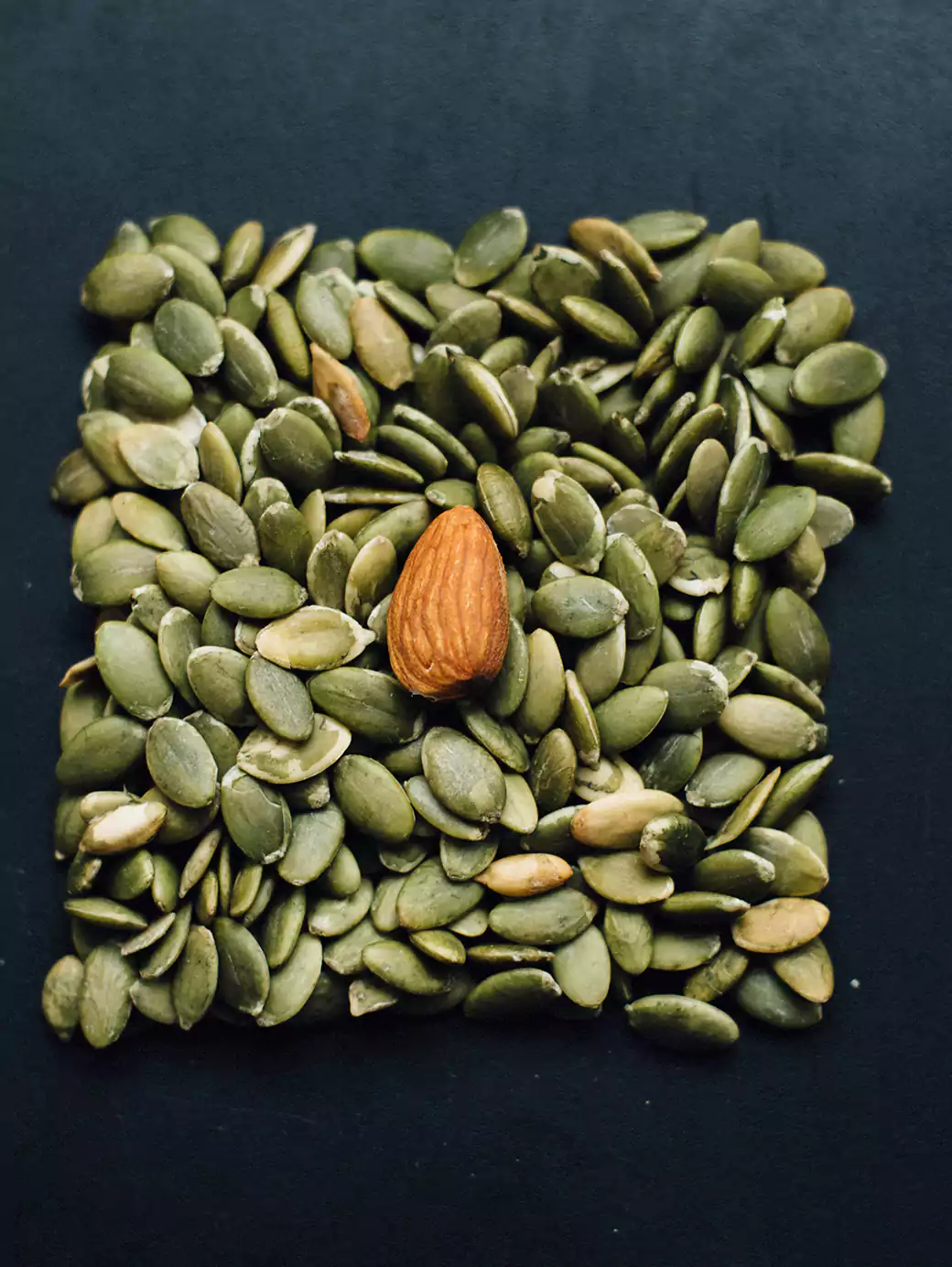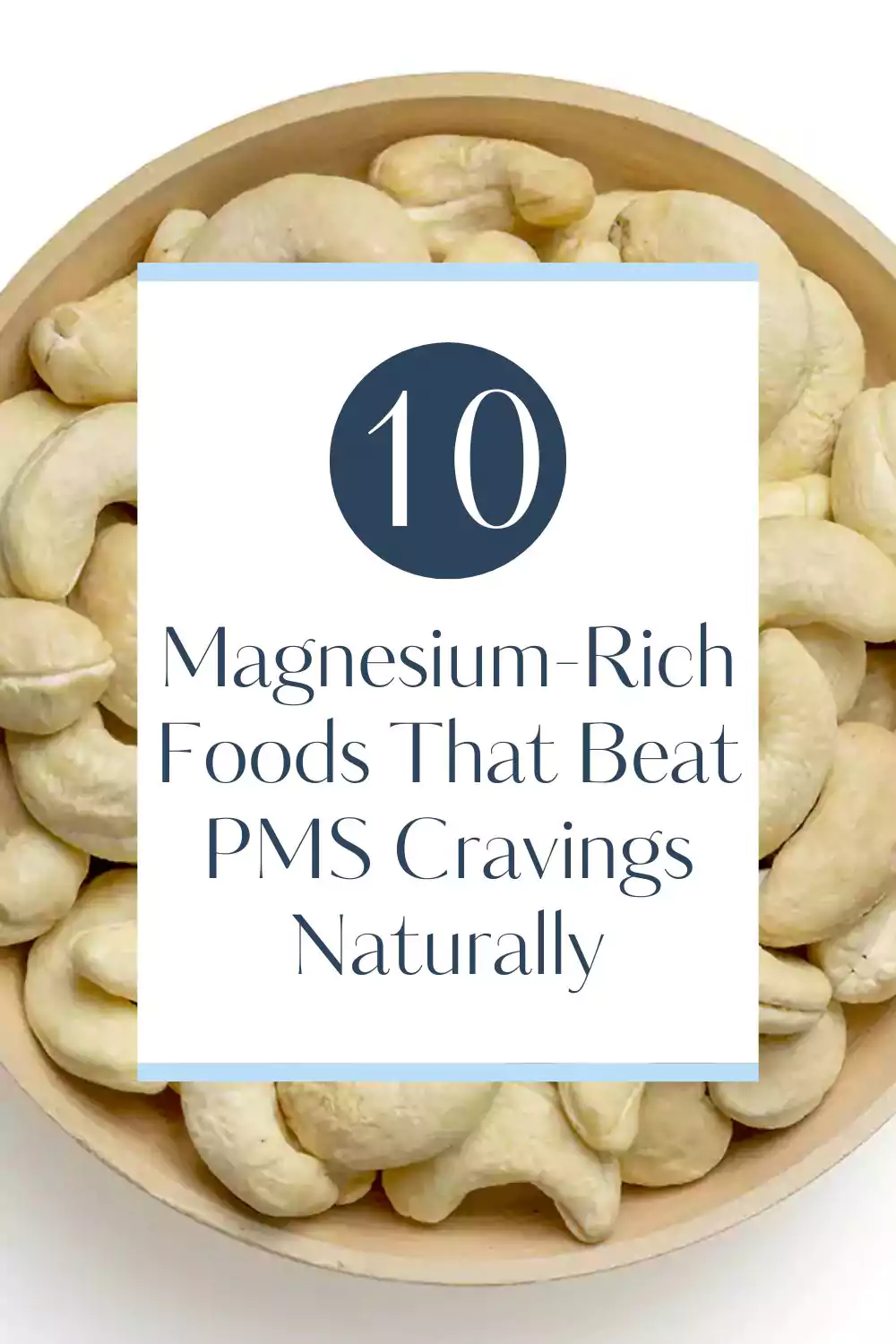Introduction: The PMS Roller‑Coaster and a Mineral You Probably Overlook
Picture this: it’s mid‑afternoon, a few days before your period. The meeting is dragging, your mood is low, and your brain is screaming “CHOCOLATE!!”. You reach into your snack drawer, pull out a bar, and in that moment, relief floods… followed quickly by guilt and the awareness that “Why am I doing this again?”
If this sounds familiar, you’re definitely not alone. PMS (premenstrual syndrome) affects up to 75% of women of reproductive age, in some form. The symptoms vary—mood swings, fatigue, bloating, cramps, intense cravings—but underlying much of this is a nutrient‑gap that too few women consider: magnesium.
Magnesium plays a role in over 300 biochemical reactions in the body. It’s critical for hormone regulation, blood‑sugar stability, neurotransmitter production, and muscle relaxation. In the days before your period, when hormonal fluctuations are powering up, magnesium becomes even more essential. A deficiency or sub‑optimal intake can fuel those dreaded PMS cravings and mood swings.
In this article I will guide you through:
- The science behind why magnesium matters so much for PMS and hormones.
- 10 top magnesium‑rich foods you can start including right now—how they help, how much they provide, and how to eat them.
- A full lifestyle and meal strategy to maximise magnesium’s effects, ease cravings and support your cycle.
- Practical recipes, internal linking for your blog, FAQs, safety notes—everything you need to publish a comprehensive article aligned with E‑E‑A‑T (Experience, Expertise, Authoritativeness, Trustworthiness).
Let’s dive in.

Why Magnesium Truly Matters for PMS and Hormone Balance
1. Hormonal shifts during the luteal phase
During the luteal phase of your cycle (typically days ~17‑28 in a 28‑day cycle), progesterone rises and then falls if pregnancy doesn’t occur—and estrogen also dips. These hormone changes trigger fluctuations in mood, appetite, metabolism, fluid retention and insulin sensitivity. The body becomes more sensitive to stress hormones and blood sugar swings.
Magnesium is involved in many of the supporting systems:
- It helps regulate insulin and glucose metabolism, which means fewer blood‑sugar dips = fewer cravings.
- It supports neurotransmitter production (e.g., GABA, serotonin) which regulate mood and anxiety.
- It helps relax muscles — uterine muscles included — which helps with cramps and physical PMS symptoms.
- It plays a role in hormone clearance (especially estrogen metabolites) via liver and gut pathways.
2. Research‑based support
- A randomized controlled trial (RCT) found that women who took 360 mg magnesium (as magnesium pyrrolidone carboxylic acid) from day 15 of cycle to menses had significant reductions in total PMS distress and negative affect compared to placebo. PubMed
- Another RCT compared magnesium alone vs magnesium + vitamin B6 vs placebo: the combo produced the greatest improvement in PMS symptoms. PMC
- According to a recent review, women with PMS often have lower magnesium levels in red blood cells/lymphocytes compared to women without PMS. ScienceDirect+1
- However, mainstream sources like the Mayo Clinic caution that evidence is still “limited or lacking” for magnesium’s strong effect on PMS and further research is needed. Mayo Clinic
3. Nutrient interactions & absorption
It’s not just about eating magnesium—it’s also about absorption and interactions.
- Forms of magnesium vary in how well they’re absorbed (glycinate, citrate are better than oxide). MDPI
- High caffeine, alcohol, certain medications, heavy bleeding, and stress all increase magnesium excretion or require more magnesium.
- Because many women don’t reach the recommended intake through diet alone, focusing on magnesium‑rich foods becomes crucial.
Bottom line: While magnesium won’t erase PMS by itself, it is one of the most actionable and well‑supported nutrients to include as part of a holistic hormone and cycle health strategy.
10 Magnesium‑Rich Foods to Include—With Details & How‑To’s
Here is a detailed breakdown of each food, how much magnesium it offers, how it supports PMS, and practical ways to include it in meals.
| # | Food | Approx. Mg per serving* | PMS‑Relevant Benefit | How to Eat / Practical Tip |
|---|---|---|---|---|
| 1 | Spinach (cooked, 1 cup) | ~157 mg | High magnesium + fibre supports blood sugar, reduces bloating; contains folate for neurotransmitter support. | Sauté with garlic & olive oil; add into omelettes, soups or a green smoothie. |
| 2 | Pumpkin seeds (¼ cup) | ~150 mg | Crunchy snack, magnesium + zinc support hormone balance; helps curb snack‑cravings. | Sprinkle on oatmeal or yogurt; snack on raw or lightly roasted seeds. |
| 3 | Swiss chard (cooked, 1 cup) | ~150 mg | Like spinach—magnesium + fibre supports detox and hormone clearance, helps reduce water‑retention. | Sautéed with lemon & olive oil; layered into grains bowls. |
| 4 | Black beans (cooked, 1 cup) | ~120 mg | Magnesium + fiber + plant‑protein = stable blood sugar & better mood; iron supports energy during bleed. | Use in salads, chili, tacos; combine with quinoa/brown rice for complete meal. |
| 5 | Cashews (1 oz) | ~82 mg | Magnesium + healthy fats + tryptophan support serotonin; helps emotional cravings. | Snack raw; sauté lightly; use cashew butter on toast or smoothies. |
| 6 | Almonds (1 oz ≈23 almonds) | ~80 mg | Magnesium + healthy fats stabilize blood sugar; fiber increases satiety and reduces sweet cravings. | Add to smoothie, breakfast bowl; eat raw or lightly roasted. |
| 7 | Avocado (medium fruit) | ~58 mg | Healthy monounsaturated fats support hormone synthesis; magnesium supports fluid balance and mood. | Use on toast, salads, smoothies, mash with seeds & lemon for a dip. |
| 8 | Dark chocolate (70%+ cocoa, 1 oz) | ~64 mg | Magnesium + mood‑boosting flavonoids; realistic “treat” that supports cravings & comfort. | Limit to 1‑2 squares; pair with nuts/seeds for extra minerals. |
| 9 | Tofu (100 g) | ~53 mg | Plant‑based protein + magnesium; good for vegetarians/vegans; supports hormone production. | Grill, stir‑fry, add to salads; choose organic or non‑GMO. |
| 10 | Banana (medium) | ~32 mg | Moderate magnesium + potassium + vitamin B6; helps mood, fluid retention, cravings. | Eat fresh, blend into smoothie, slice on oatmeal. |
*Magnesium values approximate and sourced from USDA & nutrition databases—actual content may vary by brand, preparation and region.

Practical Meal Ideas & Recipe Snippets
- Breakfast: Spinach‑almond smoothie (1 cup cooked spinach + 1 tbsp almond butter + ½ banana + almond milk + pumpkin seeds).
- Mid‑morning snack: ¼ cup pumpkin seeds + 5 raw cashews + 2 squares dark chocolate.
- Lunch: Black bean & avocado salad: 1 cup black beans + mixed greens + ½ avocado + pumpkin seeds + olive oil/lemon dressing.
- Dinner: Sautéed Swiss chard + tofu stir‑fry with quinoa + side salad with almonds.
- Evening snack: Dark chocolate + almond butter on brown‑rice cracker or whole‑grain toast.
These meals hit several magnesium‑rich foods in one day, reinforce healthy fats & fiber, and stabilise blood sugar—key for PMS support.
Building a PMS‑Friendly Magnesium Strategy
Daily Magnesium Target & Timing
- The RDA for adult women is ~310‑320 mg/day; during PMS/ luteal phase you might aim for ~350‑400 mg from food.
- Spread magnesium intake across meals and snacks—dividing intake improves absorption and supports blood‑sugar stability.
- Combine magnesium foods with other supportive nutrients like vitamin B6, zinc, fiber and healthy fats.
Pairing & Timing Tips
- Magnesium + vitamin B6: Research shows combo improves PMS symptoms more than magnesium alone. PMC+1
- Avoid heavy caffeine, alcohol, and high refined sugar in the luteal phase—they increase magnesium loss or create blood‑sugar swings.
- Ensure good hydration—magnesium and electrolyte balance work best when cells are well‑hydrated.

Cycle‑Specific Strategies
- Follicular phase (post‑menses to ovulation): Focus on maintaining magnesium and building reserves; include leafy greens, beans, nuts.
- Ovulation phase: You may feel extra energy; keep magnesium rich but meals can be lighter and more plant‑based.
- Luteal phase (post‑ovulation to period): This is the high‑demand window—prioritise magnesium‑rich foods, focus on stable carbs, protein, healthy fats.
- Menstrual phase: Continue magnesium rich meals, focus on iron + hydration + restful movement; magnesium supports muscle relaxation and cramp reduction.
Lifestyle Synergies
- Stress, lack of sleep, heavy exercise, and poor diet all deplete magnesium—making good diet even more critical.
- Gentle movement (yoga, walking) improves circulation and mood; magnesium supports muscle relaxation.
- Good sleep hygiene: magnesium supports calming GABA and may improve sleep quality—important for PMS symptom control.
- Consider gut health and fibre: magnesium‑rich plant foods also deliver fibre, which helps hormone clearance via gut‑liver axis.
FAQs — All Your Questions About Magnesium & PMS
Q: Can magnesium stop all PMS symptoms?
A: Not likely. Magnesium is one important piece, but PMS is multi‑factorial (hormones + lifestyle + stress + diet + sleep). Use magnesium as part of a comprehensive approach.
Q: How quickly will I notice a difference?
A: Some women report less craving and bloating within 1 cycle of improved magnesium intake. But better results often show in 2–3 cycles. Studies often ran 2+ months. IJWHR+1
Q: Should I take a magnesium supplement instead of food?
A: Whole foods are preferable because they deliver magnesium plus fibre, healthy fats, phytonutrients and better absorption. Supplementation may help if deficiency exists—but always check with your clinician. Evidence is modest and dosage/absorption vary. MGH Women’s Mental Health Center+1
Q: Is too much magnesium harmful?
A: Excess from food is rarely a problem in healthy individuals. High‑dose supplements, especially in people with kidney issues, can cause GI upset, low blood pressure or worse. Always consult your doctor. Verywell Health
Q: What types of magnesium supplements are best?
A: Forms like magnesium glycinate or magnesium citrate are better absorbed and better tolerated vs magnesium oxide. For cramps, glycinate is often recommended. Cleveland Clinic
Q: If I’m on birth control or medication, can I still focus on magnesium foods?
A: Yes—focusing on whole food magnesium is safe and advisable. Supplements may interact with medications, so consult your healthcare provider.
Key Takeaways
- Magnesium is a critical nutrient for PMS support: mood, cravings, bloating, cramps all link back to magnesium’s roles.
- Real‑world foods like spinach, pumpkin seeds, almonds, black beans, tofu and dark chocolate deliver meaningful magnesium—focus on regular, varied servings.
- Spread intake across your day, prioritise the luteal phase, pair magnesium‑rich foods with protein, fibre & healthy fats, and align lifestyle factors (sleep, stress, hydration).
- Supplements can play a role but don’t replace food—they require context, dosing, and clinician input.
- Change takes time—consistency over 2–3 cycles often leads to noticeable improvements.
With intentional nutrition, timing, and lifestyle tweaks, you can ease PMS cravings, boost your mood, and feel more in sync with your cycle—naturally, thoughtfully, and sustainably.




Leave a Reply